The Chinese classics or canonical texts are the works of Chinese literature authored prior to the establishment of the imperial Qin dynasty in 221 BC. Prominent examples include the Four Books and Five Classics in the Neo-Confucian tradition, themselves an abridgment of the Thirteen Classics. The Chinese classics used a form of written Chinese consciously imitated by later authors, now known as Classical Chinese. A common Chinese word for "classic" literally means 'warp thread', in reference to the techniques by which works of this period were bound into volumes.
The history of Chinese literature extends thousands of years, and begins with the earliest recorded inscriptions, court archives, building to the major works of philosophy and history written during the Axial Age. The Han and Tang dynasties were considered golden ages of poetry, while the Song (960–1279) and Yuan (1271–1368) were notable for their lyrics (ci), essays, dramas, and plays. During the Ming and Qing, mature novels were written in written vernacular Chinese, an evolution from the preeminence of Literary Chinese patterned off the language of the Chinese classics. The introduction of widespread woodblock printing during the Tang and the invention of movable type printing by Bi Sheng (990–1051) during the Song rapidly spread written knowledge throughout China. Around the turn of the 20th century, the author Lu Xun (1881–1936) is considered an influential voice of vernacular Chinese literature.
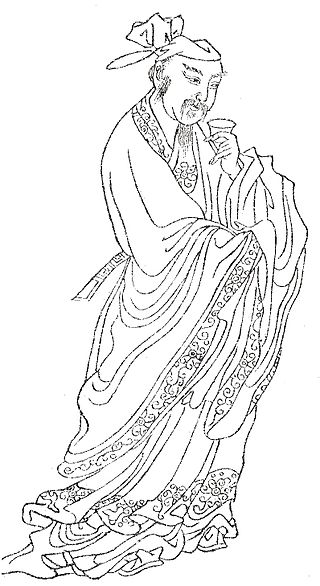
Du Mu (Chinese: 杜牧; pinyin: Dù Mù; Wade–Giles: Tu4 Mu4; 803–852) was a Chinese calligrapher, poet, and politician who lived during the late Tang dynasty. His courtesy name was Muzhi (牧之), and art name Fanchuan (樊川). He is best known for his lyrical and romantic quatrains.
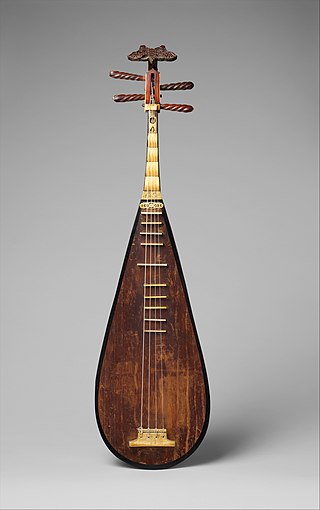
The pipa, pípá, or p'i-p'a is a traditional Chinese musical instrument belonging to the plucked category of instruments. Sometimes called the "Chinese lute", the instrument has a pear-shaped wooden body with a varying number of frets ranging from 12 to 31. Another Chinese four-string plucked lute is the liuqin, which looks like a smaller version of the pipa. The pear-shaped instrument may have existed in China as early as the Han dynasty, and although historically the term pipa was once used to refer to a variety of plucked chordophones, its usage since the Song dynasty refers exclusively to the pear-shaped instrument.
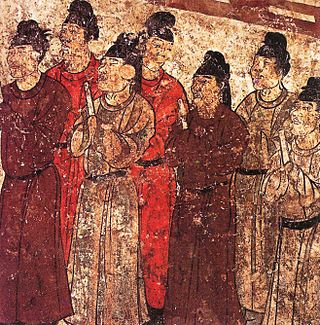
Futou, also known as fu (幞) and toujin (頭巾), was one of the most important forms of Chinese headwear in ancient China with a history of more than one thousand years. The futou first appeared in Northern Zhou under the reign of Emperor Wu where it became prevalent. It was also commonly worn in the Tang and Song dynasties. The futou was typically worn by government officials. The futou was originally turban-like headwear which was tied at the back of its wearer's head, with the two corners going to opposite directions and acting as decorations. From the Sui to the Ming dynasties, the futou evolved and was developed based on the fujin. The futou eventually came to assume a variety of shapes and styles. The shape of the futou worn by the government officials in the Song and Ming dynasties, the latter known as the wushamao (烏紗帽), was based on the futou of the Tang dynasty.

The Records of the Three Kingdoms is a Chinese official history written by Chen Shou in the late 3rd century CE, covering the end of the Han dynasty and the subsequent Three Kingdoms period (220–280 CE). It is regarded as to be the authoritative source text for these periods. Compiled following the reunification of China under the Jin dynasty (266–420), the work chronicles the political, social, and military events within rival states Cao Wei, Shu Han and Eastern Wu into a single text organized by individual biography.

Pingliang is a inner land prefecture-level city in eastern Gansu province, China, bordering Shaanxi province to the south and east and the Ningxia Hui Autonomous Region to the north. The city was established in 376 AD. It has a residential population of 2,125,300 in 2019. The urban population is almost 900,000.
Du You, courtesy name Junqing (君卿), formally Duke Anjian of Qi (岐安簡公), was a Chinese historian, military general, and politician. He served as chancellor of the Tang dynasty. Du was born to an eminent aristocratic family in what is now Xi'an, Shaanxi, almost eighteen years before the abrupt rebellion of An Lushan, and received office for the privilege as administrator of Chi-nan commandery. Robert G. Hoyland considers him a "political thinker on a grand scale," comparable to Ibn Khaldun, but he is most often remembered for his thirty-six year compilation of the Tongdian, a historical encyclopedia of 200 sections (volumes) collecting laws, regulations, and general events from ancient times to his own.
The Book of Chen or Chen Shu was the official history of the Chen dynasty, one of the Southern dynasties of China. The Book of Chen is part of the official Twenty-Four Histories of imperial China. It was compiled by the Tang dynasty historian Yao Silian and completed in 636 AD. The Chen Shu is a biographical history book with thirty-six volumes, recording the historical facts of 33 years from the accession of Chen Baxian to the last emperor Chen Shubao.

The Northern and Southern States period is the period in ancient Korean history when Unified Silla and Balhae coexisted in the south and north of the peninsula, respectively.
Du Huan was a Chinese travel writer born in Chang'an during the Tang dynasty.
The Old Book of Tang, or simply the Book of Tang, is the first classic historical work about the Tang dynasty, comprising 200 chapters, and is one of the Twenty-Four Histories. Originally compiled during the Five Dynasties and Ten Kingdoms period, it was superseded by the New Book of Tang, which was compiled in the Song dynasty, but later regained acceptance.
The Tang Huiyao is an institutional history of the Tang dynasty compiled by Wang Pu and presented to Emperor Taizu of Song in 961. The book contains 100 volumes and 514 sections; it has an abundant content for the period before 846, and scarce material unobtainable from the Tongdian, Old Book of Tang, and New Book of Tang.

The Records of the Western Regions, also known by its Chinese name as the Datang Xiyuji or Da Tang Xiyu Ji and by various other translations and Romanized transcriptions, is a narrative of the Chinese Buddhist monk Xuanzang's nineteen-year journey from Tang China through the Western Regions to medieval India and back during the mid-7th century CE.
Bianji was a Buddhist monk who lived in the Tang dynasty. He was also the translator and author of Great Tang Records on the Western Regions. Little is known about his life, apart from that he translated several Buddhist scriptures and sutras. He was executed by Emperor Taizong for having an illicit affair with the emperor's daughter Princess Gaoyang.

Tang poetry refers to poetry written in or around the time of or in the characteristic style of China's Tang dynasty, and/or follows a certain style, often considered as the Golden Age of Chinese poetry. The Complete Tang Poems includes over 48,900 poems written by over 2,200 authors. During the Tang dynasty, poetry continued to be an important part of social life at all levels of society. Scholars were required to master poetry for the civil service exams, but the art was theoretically available to everyone. This led to a large record of poetry and poets, a partial record of which survives today. The two most famous poets of the period were Li Bai and Du Fu. The Qing dynasty selection, Three Hundred Tang Poems, has made Tang poetry familiar to educated Chinese in modern times.
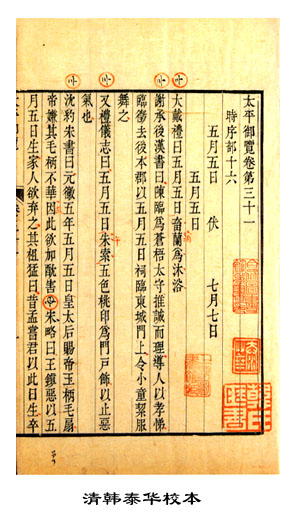
Chinese encyclopedias comprise both Chinese language encyclopedias and foreign language ones about China or Chinese topics. There is a type of native Chinese reference work called leishu that is sometimes translated as "encyclopedia", but although these collections of quotations from classic texts are expansively "encyclopedic", a leishu is more accurately described as a "compendium" or "anthology". The long history of Chinese leishu encyclopedias began with the Huanglanleishu and continues with online encyclopedias such as the Baike Encyclopedia.
Princess Gaoyang was the seventeenth daughter of Emperor Taizong of the Tang dynasty.

The Du clan of Jingzhao was a prominent Chinese clan, centred around the Jingzhao region. Tracing its origins back to the Western Han dynasty, it retained its prominence in Chinese politics and society up to the end of the Tang dynasty.
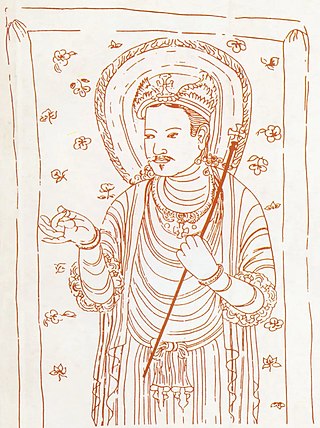
The three Persian religions, as a medieval Chinese concept, referred to a group of Iranian religions that spread to Tang China. They were recognized and protected under Tang rule, helping them to prosper in China at a time when Sassanid Iran was falling to the early Muslim conquests. The three religious movements identified by the term were Zoroastrianism, the Church of the East, and Manichaeism.












